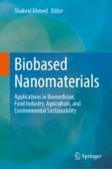Search
Search Results
-
Effects of Ultrasonic Pre-Treatment on Physicochemical Properties of Sericin Poteins Extracted from Cassava Silkworm Cocoon
Extraction of sericin protein from Cassava silkworm cocoons is beneficial to the value-added utilization of these natural waste resources. However,...

-
Preparation, Structural Characterization, and Properties of Natural Silk Non-woven Fabrics from Different Silkworm Varieties
Natural silk non-woven fabrics from different silkworm varieties were fabricated on a large scale, and the influence of silkworm variety and process...
-
Versatile Silk Polymers and Nanoparticles for Biomedical Applications
Biomaterials, both natural and synthetic, are used to create bioactive substances or as substrates to promote tissue regeneration. The main advantage...
-
Molecular Characterization of the Functional Genes Associated with Silk Assembly, Transport, and Protection in the Silk Glands of Popular Multivoltine Breeds of Silkworm Bombyx mori. L
Bombyx mori is an agriculturally important insect used extensively for silk production. India, especially the eastern regions, is mostly dependent on...

-
Magnetic nitrogen-doped carbon derived from silk cocoon biomass: a promising and sustainable support for copper
In this study, a magnetic nitrogen-doped carbon-based copper (MNC-Cu) catalyst was fabricated so that natural silk cocoons undergo thermal processes...

-
Development of Antimicrobial and Insecticidal Silk Fabrics via Eco-printing with Natural Dyes from Agricultural Wastes
Nowadays, sustainability is greatly aided by natural colors in the textile industry rather than harmful and carcinogenic synthetic dyes. Due to...

-
Production and secretion of recombinant spider silk in Bacillus megaterium
BackgroundSilk proteins have emerged as versatile biomaterials with unique chemical and physical properties, making them appealing for various...

-
Extraction of Silk Fibroin with Several Sericin Removal Processes and its Importance in Tissue Engineering: A Review
Sericin is a sticky protein substance, which is generated by the silk-worm for holding the filaments of silk tightly. The main constituent of natural...

-
Robust biocompatible bacterial cellulose/silk nonwoven fabric/silk sericin sandwich membrane with strong UV-blocking and antioxidant properties
Kombucha-derived bacterial cellulose (KBC) is a unique natural polysaccharide that has gained increasing interest in biomedical and other...

-
Photothermal Silk-based Textiles
To insulate against natural cold condition, the usage of clothing and textiles plays an important role in human existence. It is no doubt that...
-
Preparation and Physicochemical Properties of a Hemosorbent Derived from Bombyx mori Cocoon Fibroin
AbstractA procedure was developed for preparing a hemosorbent by chemical and physical modification of natural silk and fibrous waste obtained by...

-
A novel strategy for the construction of silk fibroin-SiO2 composite aerogel with enhanced mechanical property and thermal insulation performance
The practical application of silica aerogels is an enormous challenge due to the difficulties in improving both mechanical property and thermal...

-
Self-Assembled Micellar Saponin from Sapindus laurifolia Vahl.: Investigations on the Surfactant Activity on the Extraction of Fibroin from Silk Cocoons
Raw silk has made up of two constituents, filamentous (fibroin) and non-filamentous (sericin) proteins. The degumming process has been implemented to...

-
Electrospun Silk Fibroin and Collagen Composite Nanofiber Incorporated with Palladium and Platinum Nanoparticles for Wound Dressing Applications
In the field of biomedical engineering, nanofiber scaffolds have excellent biomaterial properties, making them highly suitable for superior wound...

-
Silk-Based Biopolymers Promise Extensive Biomedical Applications in Tissue Engineering, Drug Delivery, and BioMEMS
As an FDA-approved biopolymer, silk has been contemplated for a wide range of applications based on its unique merits, such as biocompatibility,...

-
Preparation of Poly(vinyl alcohol)/Silk Sericin Blend Membranes with Solvent Casting Method For Effective Removal of Remazol Black B
In the present work, poly(vinyl alcohol)/silk sericin (PVA/SS) membranes were obtained with an easily procedure and removal of remazol black B (RBB)...

-
Antioxidant and cholesterol regulatory effect of flavonoid-rich silk sericin
Cholesterol is a component of cell membranes and a precursor of hormones, and excess levels are associated with disease development; therefore, it...

-
Recent Trends in the Application of Silk-Based Composites for Remediation of Toxic Contaminants from Wastewater
The utilization of harmful chemicals, such as ions of heavy metals, organic and inorganic dyes, and oils, has expanded dramatically due to rapid...

-
Silk Fibroin-Based Biomaterials in Biomedical Applications
Biomaterials play a vital role in mimicking the extracellular matrix, develo** artificial organs, drug delivery, and other tissue engineering...
-
3D Printing Silk Fibroin/Hydroxyapatite/Sodium Alginate Composite Scaffolds for Bone Tissue Engineering
Silk Fibroin (SF) is a protein polymer with great biocompatibility, which can promote cell proliferation and differentiation, and enhance bone...

